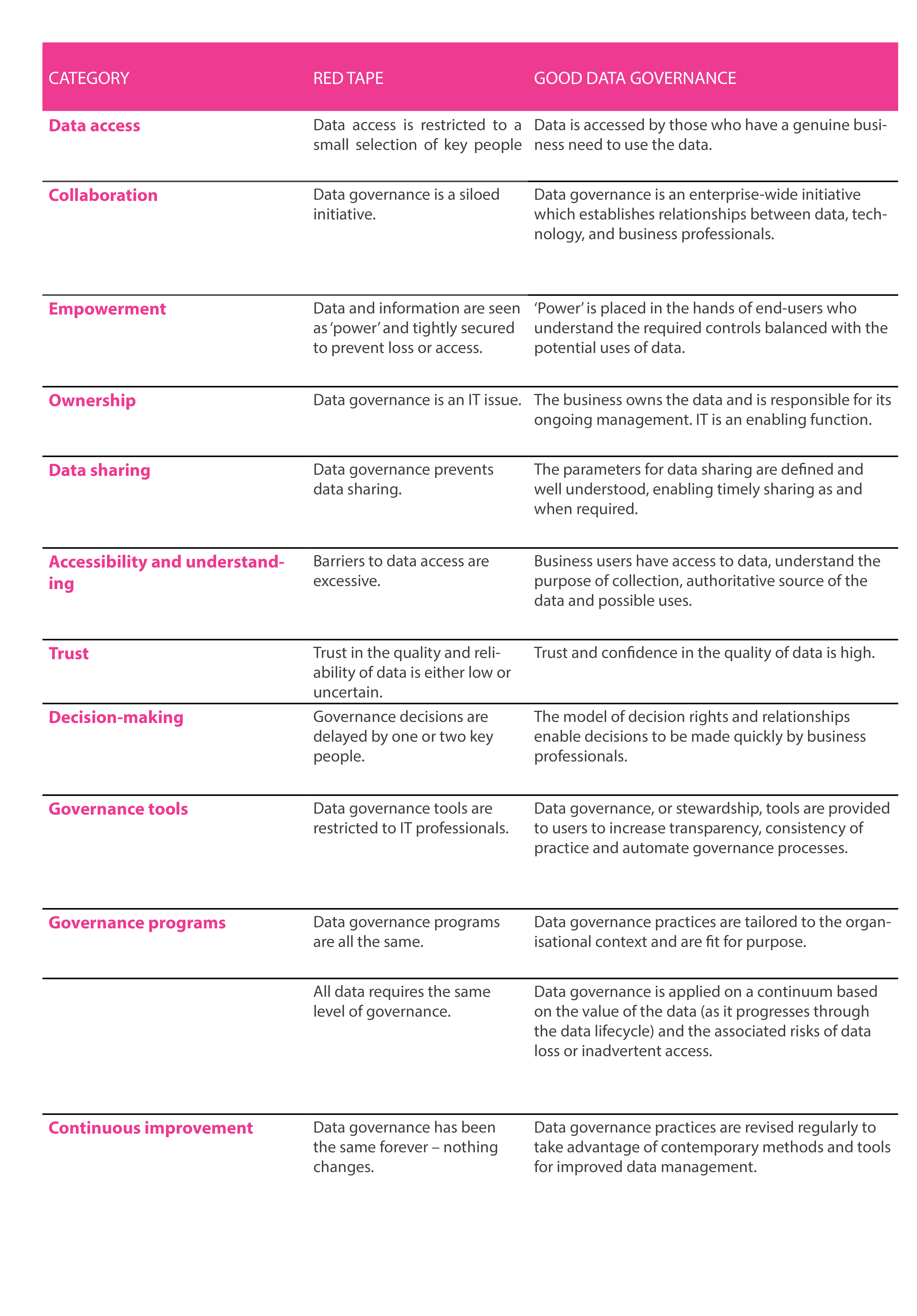Date governance often gets a bad rap.
I regularly hear complaints about governance practices being overbearing and time consuming, or an onerous administrative overhead preventing users from accessing data when they need it.
Symptoms of poor data governance are seen in many organisations as ‘red tape initiatives’ and the problem is that perception becomes reality when governance is implemented poorly.
Good data governance accelerates business decisions by involving the right decision makers at the right time – it does not create red tape. The ultimate objective is to generate the maximum return on data assets.
The following table highlights some data governance practices that hinder rather than enable business operations. These ‘red tape initiatives’ are balanced against a view of what good data governance looks like.

Good data governance – what’s the key?
A program of data governance is most successful when driven through a coordinated enterprise approach and championed from the top. Essentially, it’s a business function that works to protect and optimise the business value of the data throughout its entire lifecycle.
Data governance is not and should not be treated as an IT function. Just like other business functions such as HR, finance or legal, good data governance requires people, policies and processes with agreed priorities and methods to measure success, compliance requirements, and organisational effectiveness.
Information technology (IT) teams are critical enablers of data governance. However, just because IT are tasked with managing the systems and applications to secure the data, it doesn’t mean they are best positioned to make decisions about the context of the data, like how it can be used and who can access it.
Communication and collaboration between IT and the business is essential for success when mobilising a program of data governance.




